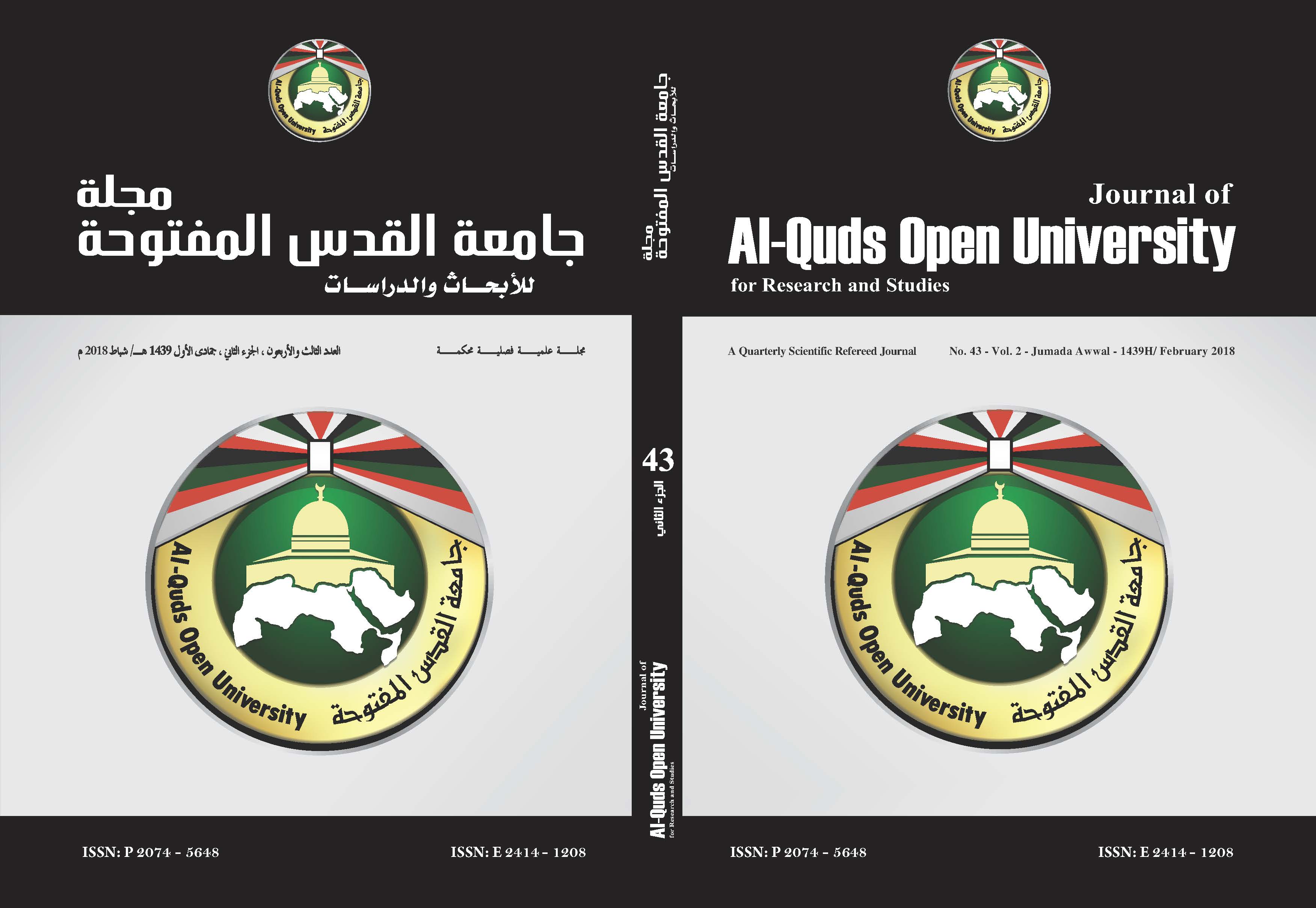The Impact and Reflections of the Zionist Settlement in the Heart of Hebron City on its Residents and the Palestinian-Israeli Conflict
Keywords:
Israeli settlement, Hebron cityAbstract
Mankind have resided in the city of Hebron for more than 6000 years. The city has been religiously associated with Prophet Ibrahim (peace be upon him). The city also includes a number of graveyards of prophets and their wives, especially in the cave of Machpela.
The Majority of Population has moved from Tel-Rumeida in the city center to the surroundings areas of Prophet Ibrahim residence place (peace be upon him). These newly built houses in that area were characterized by Islamic Architecture.
Zionists’ plans and ambitions regarding settling in Hebron started under the British mandate and after Balfour declaration. Consequently, the first presence of Zionists inside Hebron took the form of occupying the hotel of Al-Naher-al-Khaled by Jewish gangs. Then, they moved to the headquarter of the military Governor, and afterwards, to the southern part of the city, where they established Qiryat Arba’ settlement. These events were a form of the Zionists efforts to bring back the Jewish presence in the city of Hebron after the revolution of 1929.
In early 1980s, Zionists built four outposts in the heart of Hebron as follows:
1- Beit -Hadassah, which was built around Al-dbuya building.
2- Beit -Romano, which was built on the ruins of Osama bin Monqith school.
3- Abraham Avenue, which was built in the place of the old farmers market.
4- Military Camp, which is located in the old bus station of Hebron, which is a well-known place called “Alkaraj Camp.”
The before mentioned points were the first stage to Judaize the center of the city of Hebron and expel its inhabitants from it, to have a well-established settlement in the heart of the city.
The increased settlement activity in the city paralyzed the commercial and urban movement, and formed a perpetual aggression towards the population. Moreover, it expelled a large number of original inhabitants, and closed the streets leading to their homes, especially the street of Martyrs, besides the closure of the old bus station.
This is a general view of the reality of Hebron city. This paper will shed the light on the negative consequences of the occupation on the city and its reflections on the Palestinian-Israeli conflict in the Middle East.
Downloads
Published
How to Cite
Issue
Section
License
- The editorial board confirms its commitment to the intellectual property rights
- Researchers also have to commit to the intellectual property rights.
- The research copyrights and publication are owned by the Journal once the researcher is notified about the approval of the paper. The scientific materials published or approved for publishing in the Journal should not be republished unless a written acknowledgment is obtained by the Deanship of Scientific Research.
- Research papers should not be published or republished unless a written acknowledgement is obtained from the Deanship of Scientific Research.
- The researcher has the right to accredit the research to himself, and to place his name on all the copies, editions and volumes published.
- The author has the right to request the accreditation of the published papers to himself.













_2.png)
_.png)
_2.png)
_1.png)
_.png)

